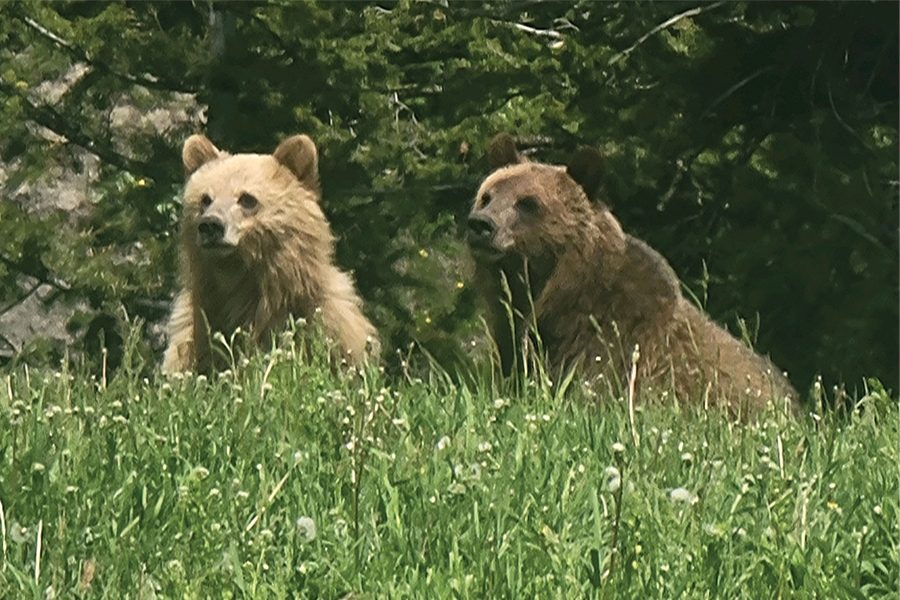
Summer Policy and Management Update
Photo by Brian Gallup
This post provides updates on some of the management projects or key policy issues we’re tracking.
Badger-Two Medicine and Helena-Lewis and Clark National Forest
The Helena-Lewis and Clark National Forest continues to analyze comments and make changes to its proposed prescribed fire plan. The plan seeks to expand the use of prescribed fire, along with associated hand and mechanical treatments, to improve ecological conditions and reduce the risk of high severity wildfires. While we agree with most of the plan’s intent, the draft EA effectively amounted to a 20-year blank check with limited accountability mechanisms. Thankfully, the Forest appears to be developing clearer sideboards as well as more opportunity for public notification and involvement in project selection and design. A decision is expected this fall.
The Forest has not yet issued a decision on the reauthorization of Outfitter and Guide permits in the Bob Marshall Wilderness Complex, but is expected to soon.
Flathead National Forest
The Flathead anticipates a draft record of decision will be released soon for a suite of proposed changes to winter motorized recreation areas, including the Skyland Challenge, as well as to allowed modes of travel in recommended wilderness areas. The decision is anticipated to align recreational use with suitability determinations made in the 2018 Forest Plan. The decision will also determine whether to amend the Forest Plan to facilitate active whitebark pine restoration in recommended wilderness areas. The decision has significant ramifications for wilderness character and wildlife habitat security across the Flathead, as well as the adjacent Badger-Two Medicine.
Looking ahead, the Flathead anticipates re-starting its development of a new Comprehensive River Management Plan (CRMP) for the three forks of the Flathead River protected under the Wild and Scenic Rivers Act in the coming months. Additional capacity has been secured to help the Flathead finally move this long delayed update to the 1986 plan ahead. The plan will have significant implications for a range of resource and recreational matters, including fisheries, wildlife connectivity in the Highway 2 corridor, and equitable recreation access.
Grizzly Bears
Two grizzly bears were relocated from northwest Montana to the Greater Yellowstone Ecosystem at the end of July. Montana Fish, Wildlife and Parks trapped a subadult male and a subadult female and transported them to Wyoming where the Wyoming Game and Fish Department then released the bears with support from federal officials. The translocation is intended to improve the genetic diversity of the grizzly bear population in the GYE as well as establish genetic connectivity with the grizzly bears in northwest Montana, a precondition for delisting grizzly bears from Endangered Species Act established by Ninth Circuit.
The governors of Montana and Wyoming are pushing to have grizzly bears removed from the Endangered Species Act. This action was intended to show the US Fish and Wildlife Service (and federal judges) that genetic connectivity can, in Wyoming Governor Mark Gordon’s words, “be achieved through active management.”
Of course actively moving a few grizzly bears every year can facilitate genetic exchange if the relocated bears successfully breed, a big if. But even if they do, this type of intensive management is not what grizzly bears deserve, nor a long-term solution we should accept. Rather than showing the success of recovery, as the states’ governors claim, it demonstrates that we’re not there yet, that the grizzly populations are not ready to stand on their own. Instead of relying on trapping and relocation, grizzly bears should be allowed to connect naturally on their own. And they’re so close to doing so, both near the Crazy Mountains and the Big Hole. We just need to be patient; and we need to continue to invest in reducing barriers to movement, as well as helping people living in areas where grizzly bears are now returning adapt to better share the landscape with the great bear.
But this is exactly what the governors do not want to do. They simply want to appease folks who are unhappy about the bear's return rather than investing in the hard work necessary to establish truly connected populations. We can, and must, do better. The Fish and Wildlife Service should see this translocation for what it is: a naked ploy, and determine not to delist at this time, as adequate regulatory mechanisms, nor confidence in Montana’s current administration’s commitments to the great bear’s future, currently exists.
A decision on the status of grizzly bears in the GYE and the NCDE is expected sometime in January, 2025.
BNSF Habitat Conservation Plan
According to the US Fish and Wildlife Service, the long-awaited BNSF Habitat Conservation Plan has met the Service’s approval as well as that of Montana Fish, Wildlife and Parks. However, it has yet to be approved by the Blackfeet Tribal Business Council. The Council’s approval, like that of Montana FWP, is necessary due to the funding mechanisms contained in the plan. It’s not clear what is preventing the Council’s approval. The HCP lays out operational changes the BNSF agrees to make to reduce the likelihood its trains will kill grizzly bears. It also provides mitigation dollars to help off-set the deaths the railroad still causes by preventing deaths elsewhere. In this case, the BNSF has agreed to fund three bear management specialist positions: two at Montana Fish, Wildlife and Parks, and one with Blackfeet Nation, as well as contribute additional funding to support conflict prevention. In exchange, the railroad will receive an Incidental Take Permit that allows it to kill up to an agreed upon number of bears over the seven year life of the plan without facing fines or other penalties. The delay in finalizing the plan means, however, a delay in getting more bear management specialists on the ground, positions critical to preventing conflicts between people and grizzly bears.
Glacier National Park
This past winter Glacier initiated scoping to update its fire management plan. This is a critical opportunity to ensure fire management in the park reflects the best available science on climate change and the ecological role of fire in different Park ecosystems, protects key resources, improves collaboration with adjacent land managers, and incorporates Indigenous Knowledge or burning practices where appropriate and requested. No word yet on when a draft management plan will be released for public review.
